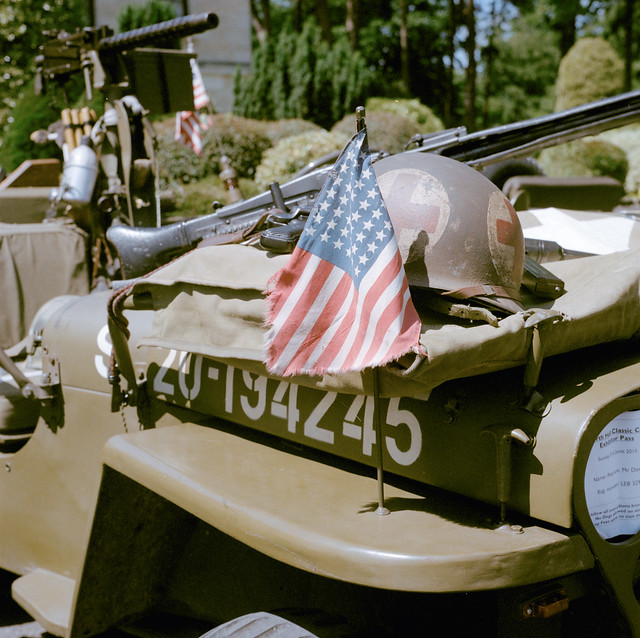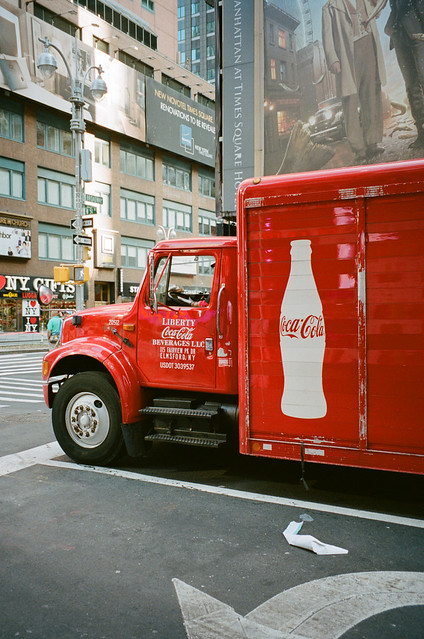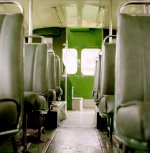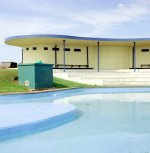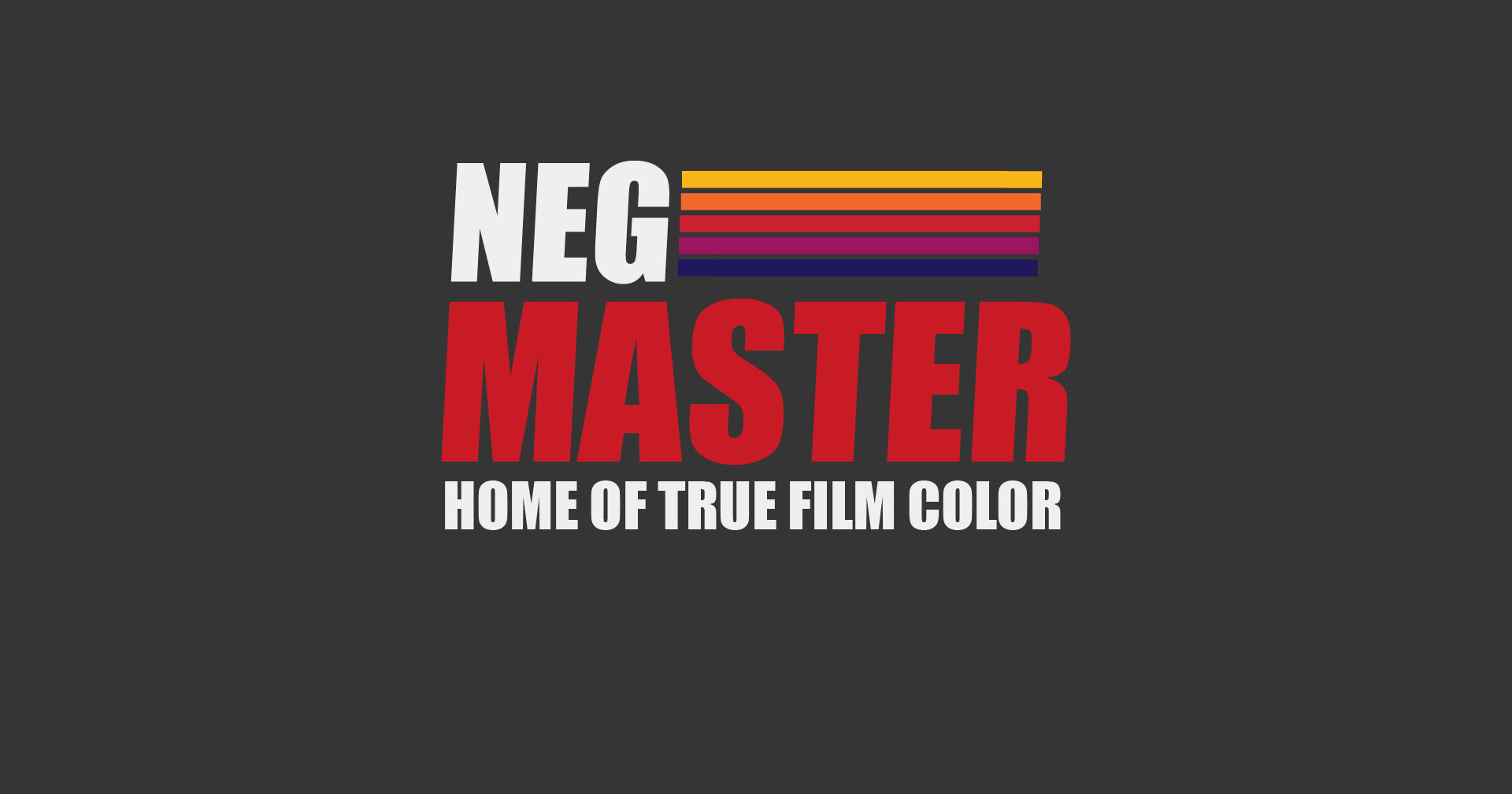- Messages
- 8,318
- Name
- Ian
- Edit My Images
- No
So this is probably overly dull, but getting decent colour has been a real thorn in my side for a *long* time now. In the end, I gave up and sent everything to Filmdev asking for "large" scans so I didn't have to worry.
But the expense of paying for a "large" scan that is the same size no matter whether it's 35mm, 6x7, or 6x17 means that when I do send off my semi-large format negs, I ask for smalls. Normally, I don't need anything other than small, but this time, I got a couple of decent photos back that I wanted to print. So I needed to scan them myself.
So I started my scan, and a standard Silverfast scan looked completely different from the Filmdev scan. This triggered me, so I found my old NLP license, redownloaded it, put it in LR, then scanned as a positive and flipped it in NLP. Then I read the instructions for NLP and did it again. These are my findings...
First up, annoyingly, Filmdev seemed to have decided that several of my 17cm weren't worthy of being scanned. I'm not going to complain because it was a small scan free with developing, but I'd have been pretty miffed if I'd paid the extra for a larger scan! I'm guessing the scanner has a 6x12 limit or something...?
All images taken on Tomiyama 6x17 camera with Kodak Ektar.
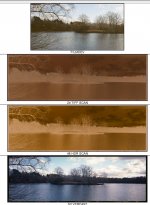
NLP recommend scanning as a 48bit HDR file in Silverfast, which is what I did and the results were quite stark vs my regular 16bit TIFF. The Silverfast "normal" scan looked pretty awful (hence me going to Filmdev for proper scanning!)
I then went through the process of converting in LR. I didn't do anything fancy with the sliders, just kept everything as default as I wanted to compare default NLP with default Silverfast.
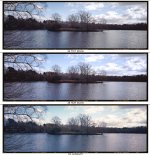
I was actually quite pleased with the results.
First - all my scans were completely different tonally to the Filmdev one. There is a "tint" to the overall image that takes all the blue out of the sky. Not sure if it's been over-warmed, but I was expecting something a bit more colourful from Ektar. It's taught me that Filmdev are probably ok for internet use but for prints, they're not really up to par - especially with Ektar.
Vuewscan standard vs NLP was a little more interesting. At first glance, they appear quite similar, but the Ektar "punch" was missing from the colour and the blue sky still didn't feel right.
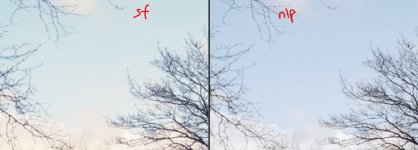
I'd call that a "significant" difference in sky tones. But it's also noticeable in the greens too...
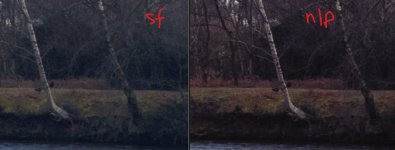
It looks to me like NLP has separated the greens and browns really nicely. The Silverfast "normal" scan has a wash over it that mushes them, and the Filmdev scan is nasty with a greeny-brown tint that ruins the sky.
In terms of the difference between the HDR scan and the TIFF scan, I'd say "not much". No blown highlights but not much to recover from the shadows. This is Ektar though which doesn't (in my experience) have the dynamic range of something like Portra. Looking at the profiles that come into LR, using the TIFF forces you to use the v21 profile, but using the HDR allows you to choose a lot more options. Reading the website, Nate looks like he's developing the programme to work with the 48bit HDR scans so it looks like I'm going to have to suck up 270Mb/image. I think I'll definitely be deleting the crap (like my test shot above)! That's 1Gb storage per roll of film!
The only downside (and it's quite a big one) is that the Lightroom sliders don't work as you'd expect in the Develop module so you need to use the NLP "develop" controls (under "Advanced"). The only way around this is to use NLP to make a positive copy whish basically exports the image back into the same folder as a "positive" at which point Lightroom controls work as normal.
Apologies for the terrible sample image, it was the 1st one I scanned and ended up being the one I tried all the different scan methods to find the best. Got the process nailed by the time I arrived at the one I'm going to print...

Marbury by Ian, on Flickr
But the expense of paying for a "large" scan that is the same size no matter whether it's 35mm, 6x7, or 6x17 means that when I do send off my semi-large format negs, I ask for smalls. Normally, I don't need anything other than small, but this time, I got a couple of decent photos back that I wanted to print. So I needed to scan them myself.
So I started my scan, and a standard Silverfast scan looked completely different from the Filmdev scan. This triggered me, so I found my old NLP license, redownloaded it, put it in LR, then scanned as a positive and flipped it in NLP. Then I read the instructions for NLP and did it again. These are my findings...
First up, annoyingly, Filmdev seemed to have decided that several of my 17cm weren't worthy of being scanned. I'm not going to complain because it was a small scan free with developing, but I'd have been pretty miffed if I'd paid the extra for a larger scan! I'm guessing the scanner has a 6x12 limit or something...?
All images taken on Tomiyama 6x17 camera with Kodak Ektar.

NLP recommend scanning as a 48bit HDR file in Silverfast, which is what I did and the results were quite stark vs my regular 16bit TIFF. The Silverfast "normal" scan looked pretty awful (hence me going to Filmdev for proper scanning!)
I then went through the process of converting in LR. I didn't do anything fancy with the sliders, just kept everything as default as I wanted to compare default NLP with default Silverfast.

I was actually quite pleased with the results.
First - all my scans were completely different tonally to the Filmdev one. There is a "tint" to the overall image that takes all the blue out of the sky. Not sure if it's been over-warmed, but I was expecting something a bit more colourful from Ektar. It's taught me that Filmdev are probably ok for internet use but for prints, they're not really up to par - especially with Ektar.
Vuewscan standard vs NLP was a little more interesting. At first glance, they appear quite similar, but the Ektar "punch" was missing from the colour and the blue sky still didn't feel right.

I'd call that a "significant" difference in sky tones. But it's also noticeable in the greens too...

It looks to me like NLP has separated the greens and browns really nicely. The Silverfast "normal" scan has a wash over it that mushes them, and the Filmdev scan is nasty with a greeny-brown tint that ruins the sky.
In terms of the difference between the HDR scan and the TIFF scan, I'd say "not much". No blown highlights but not much to recover from the shadows. This is Ektar though which doesn't (in my experience) have the dynamic range of something like Portra. Looking at the profiles that come into LR, using the TIFF forces you to use the v21 profile, but using the HDR allows you to choose a lot more options. Reading the website, Nate looks like he's developing the programme to work with the 48bit HDR scans so it looks like I'm going to have to suck up 270Mb/image. I think I'll definitely be deleting the crap (like my test shot above)! That's 1Gb storage per roll of film!
The only downside (and it's quite a big one) is that the Lightroom sliders don't work as you'd expect in the Develop module so you need to use the NLP "develop" controls (under "Advanced"). The only way around this is to use NLP to make a positive copy whish basically exports the image back into the same folder as a "positive" at which point Lightroom controls work as normal.
Apologies for the terrible sample image, it was the 1st one I scanned and ended up being the one I tried all the different scan methods to find the best. Got the process nailed by the time I arrived at the one I'm going to print...

Marbury by Ian, on Flickr
Last edited:








